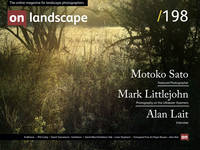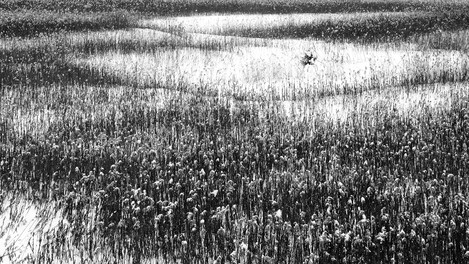Featured Photographer

Motoko Sato
Motoko Sato learned a lot from her father, a botanical artist, from a young age. She was interested in traditional crafts from early on, and in junior high and high school, she learned painting and aesthetics from sculptors. She graduated from Musashino Art University before beginning her 38 years as an art teacher. She started taking photographs after her parents died and has held two solo exhibitions: “Les Cadeaux” in 2018 and “La Resonancia” in 2019.

Michéla Griffith
In 2012 I paused by my local river and everything changed. I’ve moved away from what many expect photographs to be: my images deconstruct the literal and reimagine the subjective, reflecting the curiosity that water has inspired in my practice. Water has been my conduit: it has sharpened my vision, given me permission to experiment and continues to introduce me to new ways of seeing.
Not everything that appears in the newspapers is bad, though it can at times seem that way. We have the Washington Post to thank for bringing Motoko Sato’s photography to our attention. In addition to the black and white images featured there, she also works in colour, delighting in the flowing lines, detailed textures and soft light that she seeks in her quiet places in Japan. It’s a pleasure to be able to share more of her work with you.
Would you like to start by telling readers a little about yourself – where you grew up, your education and early interests, and what that led you to do as a career?
I was born and raised in Tokyo. My father was Hiroki Sato, a botanical artist, and our garden was full of wild and mountain grasses. When I was a kid, I thought I was a person who was not worth anything. I was afraid of getting close to people and always loved making something by myself. I went to a junior high and high school attached to Joshibi University of Art and Design to study traditional craft pottery, plant dyeing and weaving. At that time, I learned art and painting from a couple of sculptors, and I was especially impressed by the sculptor Alberto Giacometti. After graduating, I went to Musashino Art University to learn more about fine art. During that time, I was able to open my heart to people little by little in the society of school.
I have been involved in art education as a teacher for 38 years since graduation. In addition to painting, I continued to do pottery and dyeing alongside my work until my parents fell ill. I bought a camera when my parents, whom I had been caring for 14 years, passed away. I think that all my experiences before I began photographing have led to my current photographic expression.
You include a page on your website about your father, Hiroki Sato, and his botanical art. How much of an influence was he on your development as an artist? What did you most admire in him?
My father, Hiroki Sato, was born in Kagawa Prefecture and graduated from the Department of Architecture, then moved to Tokyo and started as a book illustrator. He illustrated many picture books, encyclopedias, various photographic books of plants, newspapers, magazines, and textbooks of various subjects for elementary and junior high schools. He participated in the establishment of the Japan Botanical Art Association in 1970, and since then, annual Japan Botanical Art exhibitions have been held at Odakyu Department Store in Shinjuku, Tokyo. In his later years, he was active as a lecturer in the Botanical Art Course nationwide, and in 1994 he was awarded the “International Arts Culture Award” for his contribution to the establishment and improvement of Botanical Art by the Japan Society for the Promotion of Culture. He passed away in August 1998. He was able to draw anything, not only botanical art but also technical drawings and historical illustrations. What was better than his outstanding depiction and imagination was that he really liked drawing itself. I respected my father for that. And I thank my father for not preventing me from going on the path of art. On the other hand, my parents were aiming to be so perfect that I was disciplined very hard, and I was hit by my parents every day and had a deep fear of people.


